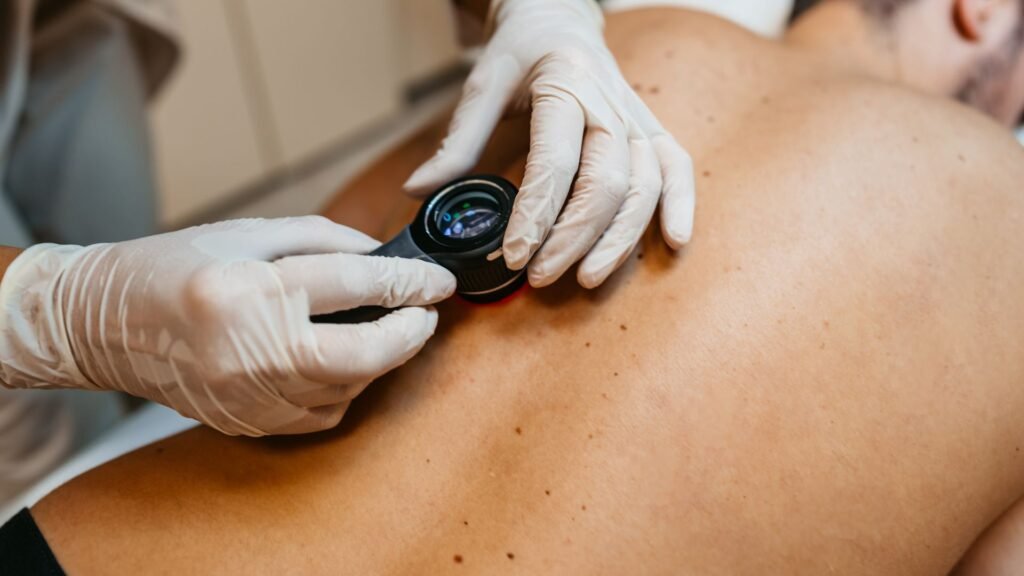Understanding Common Skin Conditions: A Comprehensive Guide
Skin, the body’s largest organ, serves a crucial role in protecting our bodies from the external environment. It acts as a barrier against harmful elements while also regulating temperature, preventing water loss, and facilitating vitamin D production. However, various conditions can impact the skin’s health and appearance, potentially leading to serious issues such as skin cancer.
The Role of Dermatologists
Dermatologists are specialized physicians who diagnose and treat skin, hair, and nail disorders. They manage a vast array of conditions, from common issues like acne and warts to serious ailments including skin cancer.
Common Skin Conditions
In this article, we explore ten prevalent skin conditions, providing insights into their causes, symptoms, and treatments.
1. Birthmarks
What Are They?
Birthmarks are typically benign spots or patches on the skin that appear at birth or shortly after. They vary in shape, size, and color. Approximately 3% to 10% of babies are born with hemangiomas, bright red birthmarks that often fade by age ten.
2. Sunburn
Understanding Sunburn
This condition is caused by excessive UV exposure, leading to redness, swelling, and pain. While usually not life-threatening, severe sunburn can lead to sun poisoning, characterized by blisters, rash, headaches, and fever.
- Treatment: Cool showers, moisturizing creams, and over-the-counter pain relievers can alleviate symptoms. In severe cases, prescription medications may be necessary.
3. Hyperpigmentation
What Is Hyperpigmentation?
Hyperpigmentation results in brown or gray patches on the skin due to excess melanin production. Factors such as sun exposure, certain medications, and skin injuries can exacerbate the condition.
-
Melasma: A specific form of hyperpigmentation commonly seen during pregnancy or with hormonal changes, presenting as dark spots on the face.
- Management: Sunscreens, moisturizers, and topical treatments containing vitamin C can help. For persistent cases, dermatological procedures like chemical peels and laser treatments might be recommended.
4. Warts and Moles
Key Characteristics
Warts, caused by the human papillomavirus (HPV), often appear as noncancerous growths on the skin. Treatment typically involves freezing or using salicylic acid to stimulate the immune response.
Moles are prevalent skin growths that may change in size, color, or shape over time. Any changes should be evaluated for potential skin cancer risk.
5. Acne
What Causes Acne?
Acne develops when hair follicles become blocked by oil and dead skin cells, resulting in pimples and red bumps.
- Treatments: Options include retinoids, salicylic acid, and benzoyl peroxide, which address the underlying causes and help improve skin texture.
6. Eczema
Characteristics of Eczema
Commonly known as atopic dermatitis, eczema causes red, itchy patches on the skin, often triggered by allergens or skin irritants.
- Treatment: Moisturizers, anti-inflammatory creams, and steroid ointments are typically effective in managing eczema symptoms.
7. Rosacea
Understanding Rosacea
This chronic condition primarily affects individuals with lighter skin, causing redness and visible blood vessels on the face. Factors like stress and alcohol consumption can exacerbate symptoms.
- Management: Topical treatments that minimize blood vessel visibility and laser therapy can effectively reduce redness.
8. Psoriasis
Characteristics of Psoriasis
Psoriasis is an autoimmune disease leading to red, scaly patches on the skin, commonly affecting the elbows and scalp.
- Treatment Options: Steroid creams and vitamin D treatments are often prescribed based on severity.
9. Shingles
Understanding Shingles
Shingles is caused by the reactivation of the varicella-zoster virus, initially responsible for chickenpox.
-
Symptoms: A painful, blistering rash typically appears on one side of the body.
- Treatment: Antiviral medications can shorten the duration of shingles while pain relief options are available.
10. Skin Cancer
Types of Skin Cancer
Skin cancer includes various types, most notably:
- Basal Cell Carcinoma: The most common, usually appearing on sun-exposed areas.
- Squamous Cell Carcinoma: Often treatable if caught early.
-
Melanoma: The most serious form that requires immediate attention.
- Advice: Regular skin checks are crucial for early detection and treatment.
Conclusion
Understanding these common skin conditions can empower individuals to seek timely treatment and maintain healthy skin. For personalized advice or treatment, consulting a certified dermatologist is recommended.
Related Resources
This article serves as an informational resource and should not be considered a substitute for professional medical advice.


